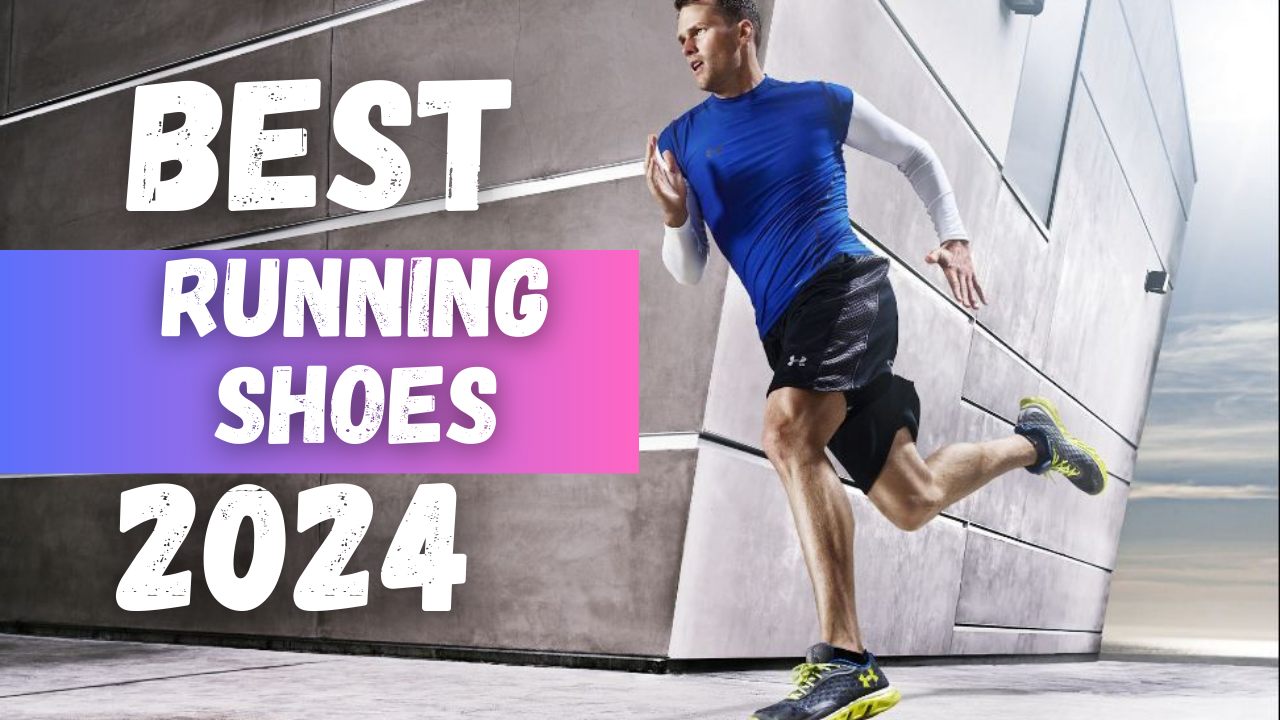Understanding your preferences in running shoes is essential: be it a desire for lightweight design, cushioning, support, or a snug fit. Alternatively, you might be on the lookout for a running shoe with carbon-plating. Undoubtedly, the pivotal aspect of any running shoe is the experience it provides over the countless miles you’ll traverse. To assist you in discovering your next perfect pair and to gauge how modifications to your preferred road or trail shoe might impact its fit or performance, we meticulously assess numerous men’s and women’s running shoes annually.
Brooks Ghost 15
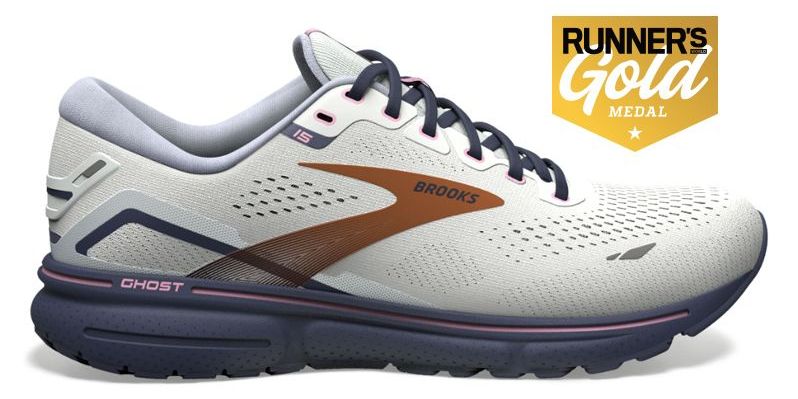
Pros:
- The upgraded DNA Loft v2 foam enhances shock absorption.
- Lighter compared to the Ghost 14.
- The upper provides ample ankle padding and forefoot space.
- Demonstrates commendable rearfoot stability.
Cons:
- Absence of a gusseted tongue.
- The higher drop results in a forefoot that feels thinner.
“You’re familiar with it, you appreciate it, and it’s reaching its 15th milestone. For well over a decade, the Ghost has been our top recommendation for beginners and those seeking an everyday running shoe. Our dedicated testers have consistently attested to its dependability, labeling the Brooks Ghost 15 as ‘a tried-and-true daily trainer.’
According to one of our runners, who had previously tested Asics’s Gel-Kayano and the Adidas Ultraboost, ‘The cushioning felt just right. It felt firm, yet at the same time, I could sense a bit of sponginess.’
The term ‘sponginess’ used by our tester describes the soft responsiveness that conforms to the contours of your foot. The firmness of the foam provides both support and effective shock absorption. Previously featured in the Ghost 14’s midsole, the DNA Loft, now upgraded to DNA Loft v2, offers a softer and more lightweight feel.” — Amanda Furrer
| Weight | 9.8 oz (M), 7.8 oz (W) |
|---|---|
| Type | Neutral Road |
| Drop | 12 mm |
| Heel Stack | 35 mm |
| Forefoot Stack | 23 mm |
Saucony Triumph 21
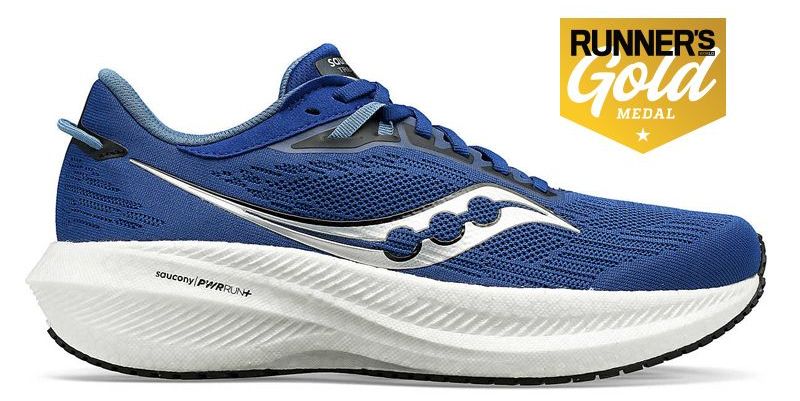
Pros:
- The midsole foam strikes a balance between being bouncy and providing stability.
- Exhibits commendable durability in the outsole.
- Enhanced midfoot lockdown through the new upper and lacing design.
- Demonstrates greater responsiveness compared to the Triumph 20.
Cons:
- Not as well-suited for speedwork.
- Slightly heavier when compared to the Triumph 20.
“The Triumph continues its trend of improvement, receiving consistently high ratings from our wear-testers in various categories, including fit, comfort, and cushioning. Even the one tester who had reservations about the shoe’s weight and speed, humorously describing it as ‘a few fries short of a Happy Meal,’ couldn’t deny the Triumph 21 a commendable score. He acknowledged, ‘This shoe does a lot right, with its cozy fit and interior.’ Notably, from the lacing to the midsole, the prevailing sentiment among our testers was the shoe’s exceptional coziness.
Tester Jonathan Durand, an underpronator and heel-striker, highlighted the laces’ stretch, making it easy to secure the shoe comfortably. Durand, who humorously made the ‘Happy Meal’ comment, emphasized, ‘The padding through the tongue and upper was the perfect accompaniment in creating a lovely harmony for my high arches.’
Saucony’s redesign of the flat-knit upper and lacing in this iteration enhances the overall secure fit. The Pwrrun+ midsole, serving as a pillowy shock absorber underfoot, is both springier and 28 percent lighter than the original Pwrrun foam.
Alyssa Dever, an overpronator and midfoot-striker, noted, ‘These were not the snappiest shoes I have worn,’ while appreciating that despite their cushioning, they never felt overly dense or energy-draining. Drawing comparisons to the Asics Gel-Kayano, a model she has run over 1,000 miles in, Dever remarked, ‘Though I’m only 130 miles into the Triumph, they feel just like they did on the first run.’ — A.F.”
| Weight | 9.8 oz (M), 8.8 oz (W) |
|---|---|
| Type | Neutral Road |
| Drop | 10 mm |
| Heel Stack | 37 mm |
| Forefoot Stack | 27 mm |
Hoka Mach 5
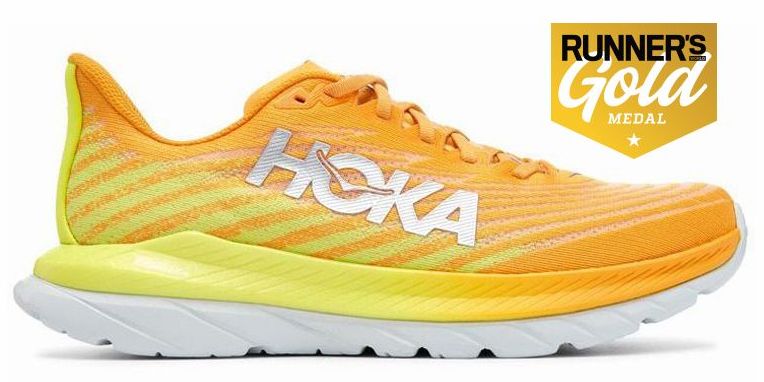
Pros:
- Enhanced upper fit and lockdown for an improved overall experience.
- Weighs less than the Mach 4, contributing to a lighter feel.
- Profly+ foam, noticeably softer and more buoyant than the original Profly, adds to the overall comfort.
- Available in wide sizing, catering to a broader range of foot shapes and sizes.
Cons:
- Outsole durability falls short of expectations.
- A few testers noted that the fit is narrower compared to the Mach 4.
Certainly! Here’s a rephrased version:
Inheriting features from its immediate forerunner, the Hoka Mach 5 has made notable changes, replacing the Mach 4’s Profly midsole foam with Profly+, known for delivering heightened energy return. Borrowing another element from the Supersonic is the narrower fit around the saddle. When placing my Mach 4 and Mach 5 side by side, the distinctions are apparent: the Mach 4’s lacing system exhibits more gaps, and the overall shape is boxier, despite both shoes sharing the same last.
Similar to my experiences testing the Supersonic, the initial runs in the Mach 5 lacked the smooth rocker flow and high rebound I had encountered with the Mach 4. Chief Runner Jeff Dengate attributed this to the tighter midfoot. However, I speculate that it could be related to the density distribution in the new midsole foam. The original Profly foam is softer in the heel and firmer in the forefoot. Since both Jeff and I are midfoot-strikers, it’s possible that some fine-tuning with Profly+ is needed to capture the pre-Sonic feel of the Mach. After a week of running during a vacation, I eventually became a convert. I noticed a positive shift, especially when increasing my pace. While it may not match the Mach 4 entirely, the Mach 5 is a version I still hold dear, and testers unfamiliar with the fourth iteration were instantly captivated by the fifth. — A.F.
| Weight | 8.2 oz (M), 6.8 oz (W) |
|---|---|
| Type | Neutral Road |
| Drop | 5 mm |
| Heel Stack | 29 mm |
| Forefoot Stack | 24 mm |
Lululemon Blissfeel 2
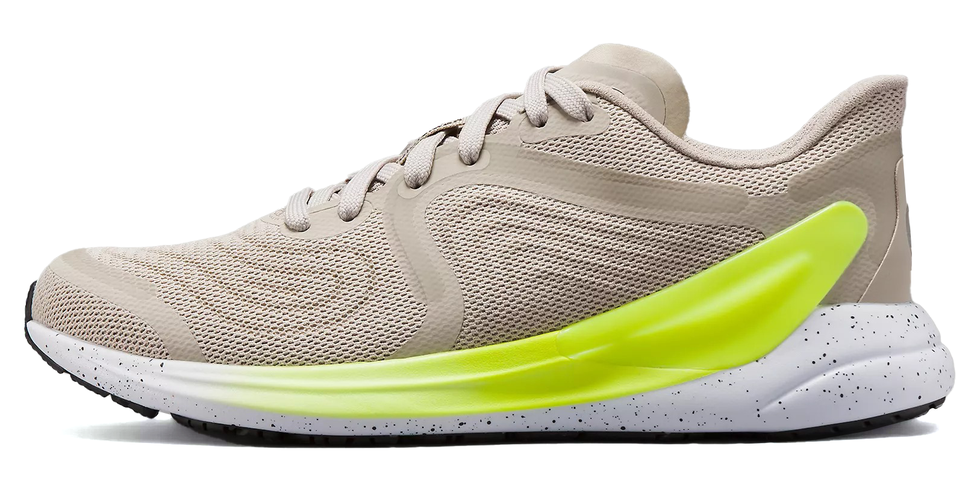
Pros:
- Tailored for a woman’s fit and biomechanics, offering personalized comfort.
- The new contoured upper ensures a secure and customized fit.
- Features supportive, thick foam that effectively cushions and buffers against impact.
Cons:
- Weightier when compared to alternative trainers.
- The upper tends to generate a bit of warmth during use.
Lululemon has evolved into a brand catering to both yoga and running enthusiasts, solidifying this dual identity with its recent venture into footwear. The release of its inaugural running shoe, the Blissfeel, last year not only marked a significant step for the company but also earned it our prestigious Gear of the Year award. If you remain unconvinced, allow the Lululemon Blissfeel 2 to make a compelling case.
Despite maintaining the same weight as its predecessor, the Blissfeel 2 exhibits a somewhat heavier and firmer feel, even with an unchanged stack height and foam composition from the original model. When running in the Blissfeel 2, the experience is reminiscent of Adidas’s Ultraboost—substantial, yet offering a notable spring in its ride. The generous toe room and cushioning provide a welcome relief, especially after trying out narrower and less-supportive trainers. — Amanda Furrer
| Weight | 8.9 oz (W) |
|---|---|
| Type | Neutral Road |
| Drop | 9.5 mm |
| Heel Stack | 33 mm |
| Forefoot Stack | 23.5 mm |
Adidas Adizero Adios Pro 3
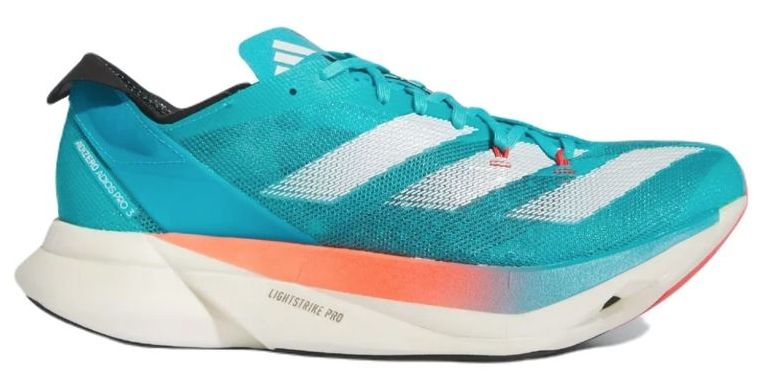
Pros:
- The midsole is wider, providing enhanced stability compared to v2.
- Incorporates five carbon-fiber rods that mimic natural foot movement.
- Offers increased forefoot cushioning in comparison to v2.
- Demonstrates excellent traction on wet surfaces.
Cons:
- Slightly heavier than its v2 counterpart.
- Sizing tends to run larger than expected.
My initial encounter with the exhilaration of racing in the Adizero Adios Pro 3 unfolded on the international stage. Participating in the Paris Half Marathon last March, I laced up these shoes after just a brief test run a few days earlier. Despite contending with jet lag, traversing miles in the enchanting City of Lights, and sustaining myself on croissants alone, I managed to secure a personal record.
The Adizero Adios Pro 3 boasts a fit reminiscent of Asics’s Metaspeed Sky—non-restrictive around the midfoot and comfortably spacious in the toebox. Its synthetic upper provides a nearly weightless coverage that embraces your foot akin to a track spike or racing flat. Squeezing your foot into the Adizero Adios Pro 3 may feel tight due to its flat tongue and secure padded collar, but the folded heel tab proves instrumental in easing into the shoe with minimal effort.
The midsole comprises two layers of resilient LightStrike Pro foam, delivering both high rebound and effective ground contact cushioning, sparing your body from excessive impact. Departing from the original Adizero Adios Pro’s carbon-fiber plate, the Pro 3 features five interconnected carbon-infused rods, named EnergyRods 2.0 by Adidas. These rods, resembling the metatarsals in your foot, offer a flexibility not found in a full-length carbon-fiber plate, harmonizing with your foot’s movement rather than dictating it during turnover.
Completing the trio of essential elements for a super shoe—responsive foam, carbon fiber, and geometry—the Adizero Adios Pro 3 incorporates a rocker with a transition point situated at 70 percent of the shoe’s length. This strategic positioning facilitates a smooth forward roll of your foot as you accelerate. Local tester Molly Sunderlin, who slightly underpronates and runs with a midfoot strike, attested to the effectiveness of the rocker, describing her stride as “easy and efficient.”
| Weight | 7.7 oz (Unisex 9) |
|---|---|
| Type | Racing |
| Drop | 8.5 mm |
| Heel Stack | 39.5 mm |
| Forefoot Stack | 31 mm |

